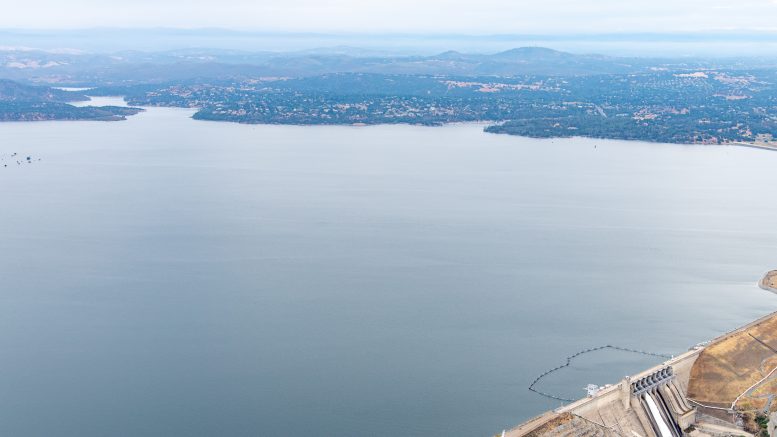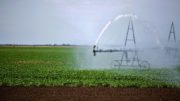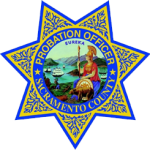A great place to store water may be under your feet.
The potential for local groundwater storage is twice as much as Folsom Reservoir’s capacity—with no new dams necessary.
Groundwater supplies about a third of the Sacramento region’s water needs. An important resource for Roseville and other local cities, it provides water supply reliability in times of drought or abundance.
“It’s the most cost-effective approach (to water storage),” says Ryan Ojakian, Legislative and Regulatory Affairs Program Manager for the Regional Water Authority (RWA).
The RWA is the umbrella organization that coordinates the efforts of 22 local water providers (including the City of Roseville) that serve more than 2.1 million residents,.
“It’s also the most sensible approach from a variety of perspectives,” Ojakian adds. “We’re trying to manage water in a more environmentally sound way. In a lot of ways, it’s what water would do if left to its own devices.”
Historically, local groundwater has been used mostly for agriculture, but urban areas are increasingly tapping into that important resource, too.
“Groundwater all started as surface water,” explains Trevor Joseph, Manager of Technical Services for RWA and the Sacramento Groundwater Authority (SGA), which manages the groundwater basin under Sacramento County and north of the American River.
Water can percolate into the ground naturally or be injected into the ground via wells. Under the surface, groundwater accumulates in “basins,” natural geological formations that line the subsurface under California. Our state’s 515 groundwater basins have been mapped by California’s Department of Water Resources with most being managed by hundreds of different local public agencies.
Groundwater can be hard to visualize; it’s not contained in underground tanks or lakes. Instead, it accumulates in unconsolidated material (gravel, sand, silt etc.) known as aquifers.
“Think of sand at the beach,” says Joseph, who worked for the City of Roseville’s Environmental Utilities department before joining the RWA and SGA earlier this year. “There’s dry sand on top, but dig down and you’ll find wet sand underneath. That’s groundwater. The water table is all the saturated sand below that depth.”
Groundwater fills the pores—the little air spaces—around soil particles contained in the aquifers in each basin.
“The basin acts like a giant sponge,” Joseph adds. “Over millennia, groundwater filled up all the porous spaces between grains of sediment. Then, humans came in and with the development of engineered wells and pumps, this allowed for more significant volumes of groundwater to be extracted out of our basins.”
During prolonged droughts, in many groundwater basins, Californians pumped out far more water then was naturally recharged back into the ground. Wells were dug deeper and deeper as water tables receded further underground.
That caused major issues.
“Water tables just kept going down; it was unsustainable,” Joseph says. “Levels dropped for four decades. In other basins, it could cause subsidence.”
Subsidence—the gradual sinking of land—can cause roads, buildings and other structures built on the surface to crumble. It has serious consequences underground, too. Once depleted of water, the layers of certain types of clay soil can’t be re-saturated, and permanently collapsed.
Through careful water management, local groundwater levels have not only stabilized but actually increased.
Our very wet winter allowed regional water managers to aid Mother Nature’s natural recharge through artificial recharge, thereby adding to their groundwater resources. It’s banking water for non-rainy days.
“There are different artificial recharge methods. What the City of Roseville is able to accomplish is when extra surface water is available, they can inject the water—recharge extra surface water down the well—into the aquifer,” Joseph says. “That water then can be extracted in dry years with no special treatment. It’s really environmentally friendly.”
Another plus for groundwater storage: There’s room—without expensive construction.
“The ability to recharge using different methods can greatly exceed any surface storage tanks you could construct,” Joseph notes. “Our available groundwater storage space in the greater Sacramento regional area is approximately 1.8 million acre feet—or about double Folsom Reservoir; that’s a tremendous amount of space for the future storage of water.”
Folsom Reservoir holds 975,000 acre feet at full capacity.
Besides injecting water via wells, groundwater gets a big boost from snow melt.
“We’ve had an exceptional year of rain and snow,” Joseph adds. “Snow melt naturally percolates into the ground, and it’s making a huge difference. We’ve seen an increase on average of more than 10 feet in monitored wells. We are seeing the benefits of natural groundwater recharge.”



























